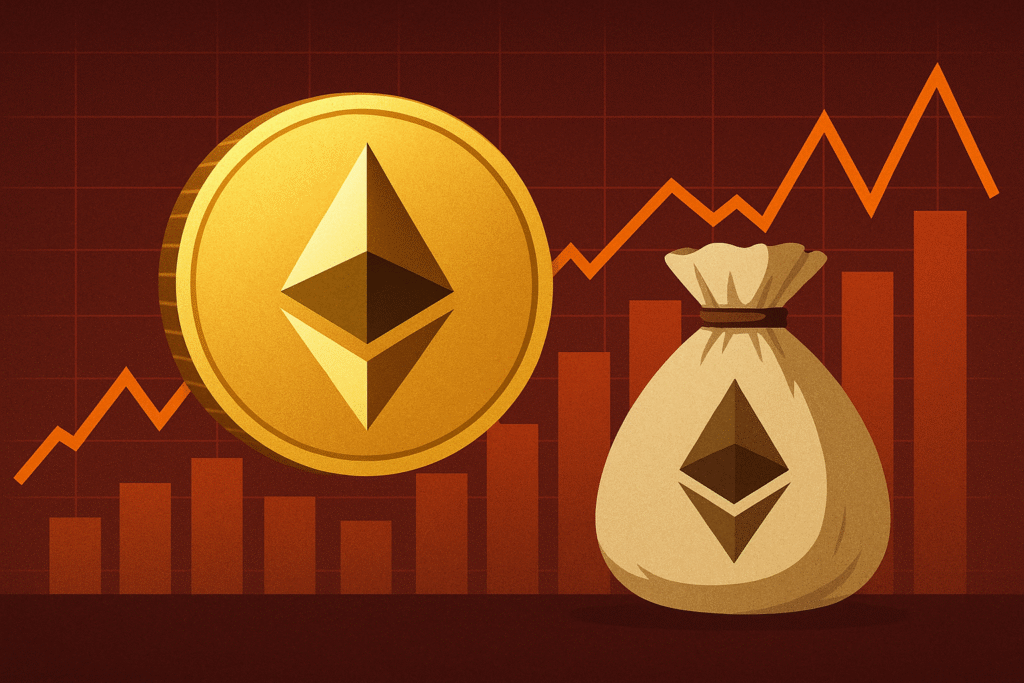Quick Takeaways:
- Projects and DAOs are racing to grow their ETH treasuries as Ethereum’s importance deepens.
- ETH holdings offer strategic advantages: governance power, staking rewards, and long-term alignment with the network.
- While bullish for ETH, the race could concentrate power and reshape influence within the ecosystem.
Ethereum isn’t just a platform anymore—it’s a treasure chest, and everyone seems to be scrambling for a bigger share. Over the past few months, there’s been a noticeable uptick in the number of projects, DAOs, and even some big-name institutions aggressively adding ETH to their treasuries. It’s like watching a modern-day gold rush, but the pickaxes are code and the gold is digital.
So what’s driving this ETH hoarding trend?
Well, a few things. First off, Ethereum’s role in the broader crypto ecosystem is massive. Whether it’s NFTs, DeFi, L2s, or newer stuff like restaking with EigenLayer, ETH is the fuel that keeps the whole thing running. And people are starting to treat it that way. Not just as a token you hold, but as a strategic asset—something you need to build, secure, and influence the network.
Everyone Wants a Bigger Slice
DAOs (decentralised autonomous organisations) in particular are stepping up. Some are reallocating funds from their stables or other assets into ETH, citing long-term confidence in the network. One dev I spoke to joked, “If you’re building on Ethereum but holding only USDC, it’s like renting an apartment but refusing to buy furniture.”
And it’s not just developers. We’re seeing treasury reports from protocols like Lido, Arbitrum, and Optimism showing growing ETH balances. Even newer L2s are building ETH reserves early on, trying to align incentives with the broader Ethereum ecosystem.
A little competition is healthy, right? Well, this feels like more than just “healthy.” It’s full-on treasury flexing now. Some projects are making public announcements about ETH buys to show strength. Others are doing it quietly behind the scenes. Either way, it’s a sign that Ethereum’s importance isn’t fading—if anything, it’s becoming more entrenched.
Why It Matters
Having ETH in your treasury isn’t just about price speculation. It also gives projects more flexibility and legitimacy. Think about it: If you’re a DAO trying to influence protocol-level governance (like voting on EIPs), holding ETH gives you more say. If you’re a DeFi protocol securing liquidity, ETH helps attract users and stakers.
And let’s not forget Ethereum’s recent narrative shift from being “just” a smart contract platform to something more like a yield-bearing asset. With staking, ETH is starting to behave like a productive treasury bond—but with Web3 flair.
That mix of security, governance power, and passive yield is a pretty compelling combo. Especially in a market where everyone’s hunting for utility, not just hype.
But Here’s the Catch
This race to stack ETH could create an uneven playing field. Smaller projects might find themselves priced out of meaningful influence. If a handful of whales or protocols end up controlling too much ETH, it could tilt governance or validator dynamics in ways that raise eyebrows.
So yeah, the race is exciting. But there’s also some tension building around who’s winning—and at what cost.


